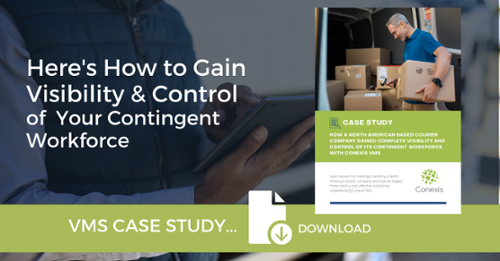The contingent workforce is growing at a significant rate, and now makes up a sizeable portion of business spend for small, medium and large organizations alike.
In fact, according to The State of Contingent Workforce Management 2021: A Future of Work Exchange Study (from Ardent Partners and Workforce Logiq), 82 percent of businesses expect an increase in the utilization of contingent workers over the next 12 months.
Back in 2018, research from Staffing Industry Analysts (SIA) found that companies worldwide spent $4.5 trillion (US) on contingent work. The majority of that, $2.67 trillion, was spent on independent and self-employed workers.
Not only is the non-employee workforce a growing requirement for most businesses, but so is the need to use vendors to source, hire and invoice these workers. That’s not even mentioning the vendors you are using to fill your non-staffing requirements.
It’s not unusual for companies to have tens, hundreds, or even thousands (for international enterprises) of vendors supplying their business with products and services.
Alongside the growth of the contingent workforce and increased vendor use comes a new challenge, managing non-employee workforce spend. Unfortunately, the large majority of organizations, especially those with smaller contingent workforce volumes, are not implementing effective contingent workforce management trends.
This results in rogue spend that runs rampant through the business.
What is rogue spend in contingent workforce management?
There’s no denying it, managing a non-employee workforce and the vendors associated with it is a complex task. Some companies use manual processes such as spreadsheets, in-house databases, and Sharepoint-like sites to manage all of these data points. While other organizations do not even manage contingent spend at all.
When either of these two things happens, rogue spend will start to invisibly affect your business.
Rogue spend is essentially spending that occurs on sourcing, engaging, and hiring contingent workers in scenarios that are not accounted for, not approved, and have not followed a strategic approach to contingent workforce management.
This happens when your organization has no centralized management strategy for the hiring of non-employee workers.
When businesses have poor contingent workforce management programs, managers in different departments of the organization will engage staffing suppliers outside of pre-negotiated rate contracts, hire one-off contingent non-employee workers through their own methods, at rates they believe appropriate, and engage workers outside of pre-approved buying channels.
How to prevent rogue spend with VMS technology
Contingent workforce rogue spend occurs when managers in your organization go rogue, but this doesn’t mean it is their fault. The risk of rogue spend is created by a lack of centralized management, which prevents organization-wide visibility into your non-employee workforce and results in inefficient processes.
The State of Contingent Workforce Management 2020 study from Ardent Partners states that visibility remains an issue for the average contingent workforce program. In fact, the average rate of visibility into non-employee workforces has dropped nearly 20 percent since late 2018.
There's good news, however, with the study stating: “As businesses adapt to the changing world of work (and, as more rigor is applied to operational aspects concerning the way new talent strategies are integrated into the greater program), visibility will improve.”
One of the most effective ways for your organization to get on top of rogue spend is to move away from archaic manual spreadsheets and start using automated technologies. This is where a vendor management system (VMS) comes in.
VMS software is a cloud-based technology that allows you to consolidate your vendors and manage every step of your contingent workforce in one central database. Using a VMS will allow your organization to structure and optimize every process in relation to hiring non-employee workers and measuring vendor performance.
A vendor management system will automate transactions, store non-employee workforce data, facilitate onboarding, measure vendor performance, collect requisitions from managers and consolidate all of your vendors in one location.
By centralizing your entire non-employee process in one place, every stakeholder in your business will be aligned with your contingent workforce strategy and your business will have clear visibility into contingent workforce spend.
- Read More about VMS Pricing and ROI
➡️ Save Money with Conexis VMS' Unique Pricing
➡️ 5 Vendor Management Best Practices to Maximize ROI
➡️ Vendor Management Software: What's the Cost & ROI?➡️ How Much Does a Vendor Management System (VMS) Cost?
➡️ How a VMS Lowers Contingent Workforce Cost➡️ The Top 10 Questions to ask a VMS Provider about Pricing: VMS Buyers Guide Checklist
Interested in learning more about Vendor Management Systems?
Whether you are looking to change your VMS solution, or just getting started, we are here to help. Contact Us for a Free No-Obligation Consultation to discuss your workforce challenges (and get immediate actionable insights). See how easy Conexis is to use by taking a quick 2 minute Self-Guided Tour, or Book a Personal Demo Today!








